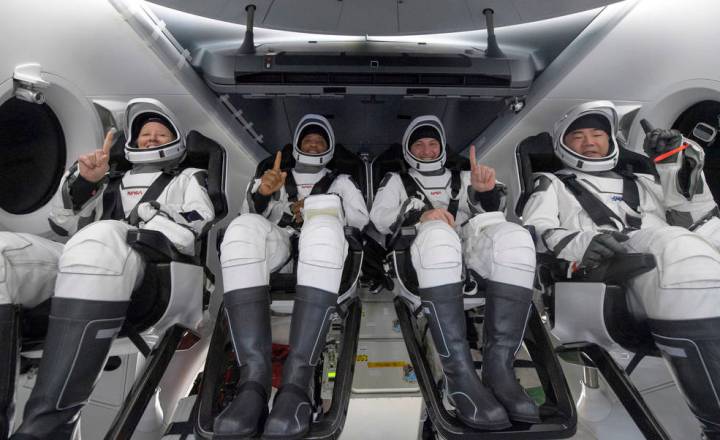
The four astronauts of the Crew-1 mission have made it home safely from the International Space Station, splashing down in the ocean off the coast of Florida early this morning at 2:56 a.m. ET. They traveled home in the SpaceX Crew Dragon spacecraft, completing the return journey for the first full operational mission of the new craft.
NASA astronauts Michael Hopkins, Victor Glover, and Shannon Walker, as well as Soichi Noguchi of the Japan Aerospace Exploration Agency (JAXA), have spent 168 days in space, during which time they orbited the Earth 2,688 times. During their approximately six months on the ISS, they worked on five spacewalks, including those to prepare the station’s power system for the installation of new solar panels later this year and to install the new Bartolomeo science platform.
The astronauts entered the Crew Dragon and undocked from the space station at 8:35 p.m. ET on Saturday, May 1. They traveled back to Earth over Saturday evening before landing in the early hours of Sunday in the Gulf of Mexico off the coast of Panama City, Florida. This was an unusual nighttime splashdown, and the astronauts were secured using the Go Navigator recovery ship and two fast boats before being taken for a medical checkup by helicopter.

The new NASA Administrator, Sen. Bill Nelson, welcomed the crew home and hailed the completion of their mission. “Welcome home Victor, Michael, Shannon, and Soichi, and congratulations to the teams at NASA and SpaceX who worked so hard to ensure their safe and successful splashdown,” he said in a statement. “We’ve accomplished another incredible spaceflight for America and our commercial and international partners. Safe, reliable transportation to the International Space Station is exactly the vision that NASA had when the agency embarked on the commercial crew program.”



